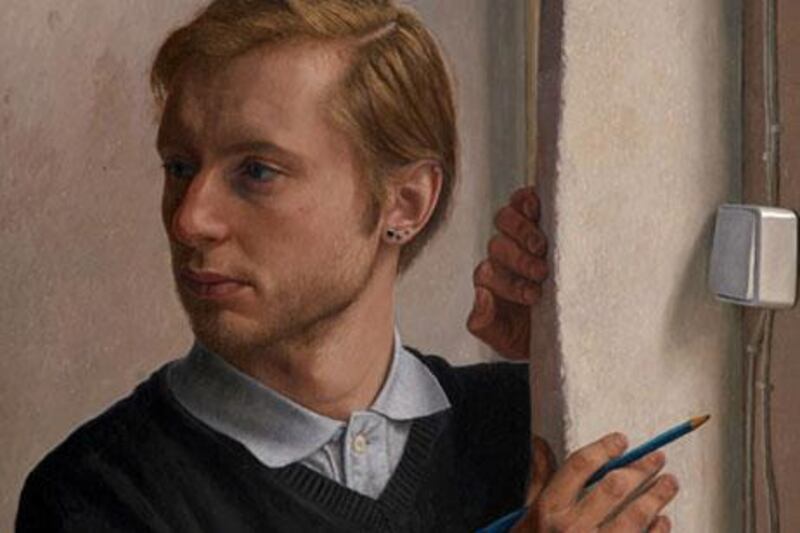When the Dutch artist Wim Heldens won the prestigious BP Portrait Prize last week with a painting called Distracted, his subject would have been forgiven for heaving a huge sigh of relief. For Heldens has been painting the same person throughout his life. Jeroen, now 25, has patiently sat for Heldens a staggering 17 times. The first time he was just seven years old and Heldens is described as having become a father figure to the young man as he continued to paint him.
In Distracted, Heldens has captured Jeroen, who is studying philosophy, in a suitably thoughtful pose - looking away from the artist's gaze, pencil in hand. Although Heldens himself is unlikely to draw too many comparisons between his painting and Jeroen's studies. "I paint what I 'feel' with my eyes and maybe it is for other people then to tell what I've captured," he said at the awards.
The chairwoman of judges, Sandy Nairne, was one of those "other people", calling Distracted "a quiet but evocative study... an outstanding work in the midst of a truly diverse field of new portraits". Perhaps, some speculated, such recognition might encourage Heldens to close this particular chapter of a career in which he taught himself art. Although you wouldn't put it past both him and Jeroen to continue the project. There is something enthralling and enchanting about the narrative this series of paintings encourages - from a beaming child in a football kit to a man with a collection of ear studs, pensively looking into the distance, we're invited to join the fragments of a life together via Heldens' paintings.
Heldens, of course, isn't the first painter to continually return to the same subject. He's not even the first portrait painter to do so. Although Lucian Freud painted hundreds of famous people - everyone from Leigh Bowery to Queen Elizabeth II - he returned to the larger-than-life job centre manager Sue Tilley again and again. The reasons why she sat for him during a four-year period in the early 1990s - completing a series of portraits, paintings and etchings - remain unclear even to Tilley. She first believed she was chosen because she was so ordinary, then because, as she memorably said to The Guardian in 2005, "he got value for money... he got a lot of flesh." One thing's for certain, Tilley fascinated Freud, and prompted probably his best-known work. Benefits Supervisor Sleeping was sold for $33.6m in 2008 - and remains the highest price paid for a painting by a living artist.
The Impressionists, too, had a similar repeated fascination with subjects - it's just that in their case, it was buildings and scenes rather than people. Famously, Claude Monet rented a room opposite the Cathedral of Rouen in 1892, specifically to paint the same building over and over again. There are thought to be more than 30 versions of this Impressionist masterpiece, taking pride of place in galleries from Washington, DC to Hakone, Japan. But this wasn't a cynical money-making exercise from a popular painter, nor the actions of an artist struggling for interesting subjects to depict. Instead, Monet was fascinated by the way the light changed the way a building looked at different times of the day and year. The difference between the darkly gothic drama of Cathedral of Rouen in, as Monet puts it "Dull Weather", and the gorgeous pinks of the same vista at sunset make his point effortlessly. It looks like a different building altogether.
Monet isn't the only artist to work in this way, painting and repainting a single subject in different ways. Van Gogh's many Sunflowers and Picasso's deconstructed Bulls do much the same thing. More recently, Damien Hirst's series of animals in formaldehyde and his spot paintings in different colours weren't so much a result of laziness (although, granted, Hirst has admitted workers at his studio finished off most of "his" paintings) as a desire to push an idea as far as it would go before moving on to the next project - such as encrusting a skull with diamonds and asking £50 million (Dh297m) for it.
Heldens, meanwhile, works in a far more sober, conservative way. Still, coming first at the BP Portrait Prize not only means a whole new level of exposure, and a £25,000 cash prize but also a commission from the trustees at the National Portrait Gallery. Judging by the beautiful paintings that track the life of his intriguing subject, they could do a lot worse than simply asking for the next in the Jeroen series.





